In the art of candle-crafting, wax is your blank canvas. Just like an artist preps their paint, a candle-maker must master the art of melting wax. And while it may seem like a straightforward step, there's a method to the madness. If you’re a beginner at candle-making, we're here to share all the tricks of the trade. So roll up your sleeves and let’s demystify the process of turning those solid wax blocks into velvety liquid goodness.
The basics: What is the melting point of wax?
In the world of candle-making, understanding the melting point of various waxes is foundational. It's like knowing your baking ingredients inside and out. Different waxes have varying melting points, and this can significantly influence how your candles form, function, and even their aesthetic appeal.
Melting point of paraffin wax
Let's start with the ever-popular paraffin wax. Derived from petroleum, this wax is commonly used for its ease and versatility. It generally has a melting point ranging between 46°C to 68°C, depending on its blend and intended use.
Melting point of soy wax
Next up, soy wax. Often touted for its eco-friendly properties and cleaner burn, soy wax usually melts at around 45°C to 55°C. It’s made from the oil of soybeans, giving it a softer consistency and a slightly lower melting point than some paraffin waxes. Psst, discover all you need to know about soy wax in our guide.
Melting point of coconut wax
And for those who fancy a tropical touch, coconut wax steps in as a contender. Extracted from the raw material of coconut, this wax offers a melting point typically around 52°C to 54°C. This consistency gives coconut wax candles a creamy appearance, setting them apart from their counterparts.
Understanding these different melting points isn't just about knowledge—it's about precision. The specific melting point of your chosen wax will influence how you heat it, the fragrance and dye integration, and even the final appearance and burn time of your candle.
To simplify: Know your wax, know its melting point and you're already leaps and bounds ahead in crafting the perfect candle. Keep this article handy to have the numbers when you need them along with a dash of extra candle-making wisdom. And if you still can’t decide on your wax, check out our comparison guide.
How to melt wax for candles

When it comes to melting wax for candles, there's more than one way to turn that solid chunk into a pool of potential. Each method comes with its pros, cons and considerations. Let's explore some of the most common techniques and how to make them work for you.
Traditional double boiler method
This old-school technique involves placing a container of wax into a pot of simmering water. The indirect heat ensures even melting and prevents the wax from overheating. It’s the go-to method for many, given its control and consistency. The trick? Ensure that no water finds its way into your wax—trust us; they don’t play well together.
The microwave technique
"Can you melt candle wax in the microwave?" Absolutely! It's a swift and straightforward method, especially if you're working with smaller batches. Here's how to melt candle wax in the microwave:
- Chop your wax into smaller chunks or use pellet form for more even melting.
- Place it in a microwave-safe container, preferably one designated for wax melting.
- Heat in short bursts, starting with 2 minutes, then stir. Continue with 30-second intervals, stirring in between until fully melted.
The advantage? It's quick, and there’s less clean-up. But remember, never leave the wax unattended and always monitor closely, as different microwaves have varying power levels.
Safety first when melting wax at home

Candle safety is more than just burning your candle correctly. While melting wax is therapeutic and satisfying, safety should always be at the forefront. Here are some quick tips for a hazard-free experience:
Avoid overheating: Melted candle wax can catch fire if overheated, it will also burn and take on a smell that no fragrance oil can compete with. Always keep a close eye, use a thermometer, and never leave melting wax unattended.
Work in a ventilated area: Some waxes, when heated, can release fumes. It’s best to work in a well-ventilated space to keep the air fresh and free of any potential irritants.
Wear protective gear: While we're all about getting hands-on, remember that melted wax is hot. Wearing gloves and using protective eyewear can prevent unexpected splashes and burns.
Whichever method you choose, the magic of turning solid wax into a liquid form ready for moulding, scenting and colouring is undeniable. With a little practice and patience, you’ll perfect your melting technique and be on your way to crafting candles that are nothing short of art.
Candle wax melting equipment
Crafting the perfect candle isn't just about the wax and fragrance—it's also about having the right tools in your corner. Armed with the ideal equipment, the process becomes seamless, and the results? Exceptional.
The candle wax melter
This isn’t your average pot!. Designed specifically for melting wax, these melters ensure an even melt, preventing hot spots or uneven heating which can lead to a poor-quality candle. However, cost can be a factor here, while they are an incredible piece of equipment to have; they’ll set you back anywhere from a few hundred to a few thousand depending on size and functionality.
Selecting equipment for different waxes
Different waxes come with varied melting points and characteristics, and hence, their melting gear can differ. The key? Familiarise yourself with the properties of your chosen wax and invest in equipment that complements it.
Maintenance and best practices
The best equipment, if not maintained, can lose its efficacy over time. Here are some pointers for ensuring longevity and an optimal melt every session:
- Regular cleaning: Once you're done melting, allow the equipment to cool slightly, then wipe away any residue. Clean equipment ensures no old wax or debris interferes with your new batch.
- Even heat distribution: Always ensure the wax is spread out evenly in your melting tool. This helps in uniform melting and reduces the risk of overheating.
- Thermometers are a must: Investing in a good thermometer will allow you to monitor the wax's temperature closely, ensuring it doesn’t surpass its ideal melting point.
The bottom line here? Your equipment is an extension of your craft. Selecting the right tools, maintaining them well and understanding their nuances means that you end up with a top-quality final product.
The melting point (pun intended!)
Look, candle-making isn’t just about pretty scents and colourful jars. It's that satisfying pour of smoothly melted wax that really makes the magic happen. From picking the right tools and candle-making supplies to knowing your waxes, there’s an art behind this part of the process.
So, as you keep experimenting, remember: every hiccup is just a learning curve and every perfect pour deserves a high-five! And who knows? Maybe one day you can turn your candle-making hobby into profit!

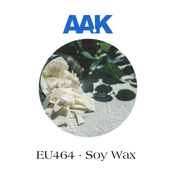
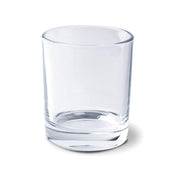
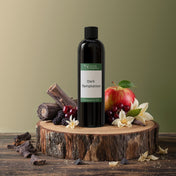
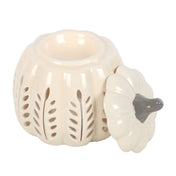
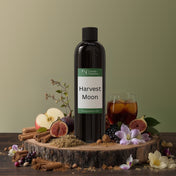
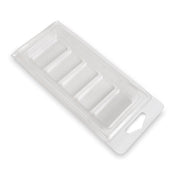


2 comments
Hi, can you melt gel wax in a microwave? Regards, Andrea
———
NI Candle Supplies LTD replied:
Thanks for your comment, Andrea. Microwaves are not suitable for melting gel wax. We would suggest seeking guidance from your supplier on the best way to melt gel wax, as it is not a product we offer.
You’re very welcome Claire. We don’t have anything specific on candle carving, sorry. We’d suggest jumping on YouTube and watching a few tutorials to help get you started.